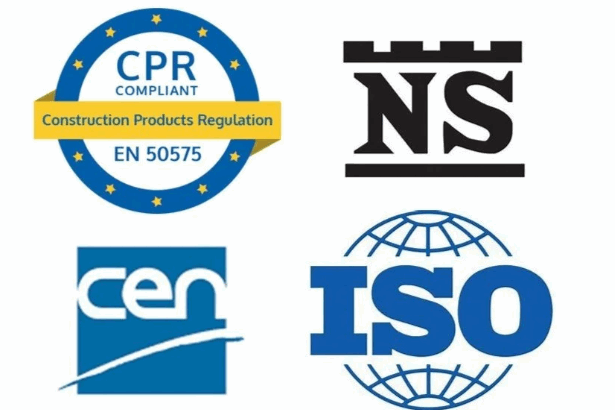The “TRE-Standard” project has provided increased insight into ongoing standardization work of relevance to the woodworking industry and provided a basis for the industry to become more involved in long-term national and international standardization work in the future. Standards establish market requirements that have a decisive impact on which construction solutions are chosen.
Desired by businesses
– “With the TRE-Standard project, we have met a need in the industry. The background to the project was that our specialist group “Future building solutions” wanted us to take a closer look at this topic,” says cluster manager Berit Sanness of Norwegian Wood Cluster. She has been the project manager for “TRE-Standard”.
– There are many key company representatives in this specialist group. “The companies’ priorities are crucial to the project initiatives we take. The message was clear, and we followed it up,” says Sanness.
Before the project started in the fall of 2022, Norwegian woodworking companies had limited involvement in climate and environmental standards for the construction sector, regardless of materials. At the same time, national and international standards set the premises for how climate documentation is prepared and how the climate footprint is calculated for both individual materials and buildings.
Praise for Innlandet County Council
Berit Sanness praises Innlandet County Council for supporting the project financially.
– The Norwegian Wood Cluster has strong woodworking companies from Inland Norway as members, and they supported the project. However, these companies are dependent on a much broader mobilization to safeguard the industry’s competitiveness in this area, and the county council understood this. It is therefore a credit to Innlandet County Council for seeing the importance of the mobilization work and supporting the project financially,” says Sanness.
Awakening
One of the main initiatives under the auspices of the project was a workshop at Mjøstårnet in the fall of 2023. It had high participation and was summarized as a breakthrough. A statement from one of the 40 participants, who had previously attended several meetings on the subject, summarizes the benefits of the workshop: “Now the seriousness of standardization is starting to dawn on me”.
The workshop produced acknowledgements, insights and concrete plans for action. There was broad agreement that the industry needs to do something about this by coordinating resources and focus areas.
See the review of the workshop here: Mobilization for standardization – NWC (nwcluster.no)

Key players involved in the project
Both Moelven Limtre and Hunton Fiber have been members of the project group for “TRE-Standard”. So have Treteknisk and the Timber Industry. In addition, WoodWorks! has participated as an observer.
– At a national level, Treteknisk and the Timber Industry have the key roles in the standardization area. They have therefore also played key roles during the implementation of the “TRE-Standard” project. At the same time, it has been crucially important for us to draw on the companies’ experiences. This happened not least during the workshop, where both Dynea AS and Moelven Limtre AS shared their experiences from many years of standardization work,” says Sanness.
EU Construction Products Regulation becomes central
The project’s mobilization work has raised awareness of the importance of standardization among a number of woodworking companies in Innlandet and the rest of Norway. In addition, the project has analyzed the consequences of the EU’s new Construction Products Regulation, which will be crucial for standardization work in the future. The Norwegian Institute of Wood Technology has carried out the analysis for the project.
– “The EU’s new Construction Products Regulation will lay down clear premises in the area of climate and the environment and will take precedence over standardization work,” says CEO Audun Øvrum. Audun Øvrum, Treteknisk.
The Construction Products Regulation (CPR) is a trade law that describes how construction products must be documented in order to be legally traded in the EEA. The new CPR, which is expected to be legally approved in the EU in November 2024, introduces requirements for the declaration of climate and environmental data through CE marking, which has not previously been mandatory.
The current regulations for calculating and declaring climate and environmental properties have been developed by the European standardization committee Sustainability in construction work (CEN TC350).
Ensure consistent calculations
– “The current regulations are incomplete and leave too much room for interpretation in how to calculate life cycle accounts, where allocation, mass balance and data quality requirements are key concepts that greatly affect the results of the Environmental Products Declaration (EPD),” says Audun Øvrum, CEO of Treteknisk. Audun Øvrum, Treteknisk, who heads Standard Norway’s committee for wood and wood-based materials.
The implementation of the new Construction Products Regulation entails extensive changes to the standardization processes for CE marking of construction products. This framework is being developed in a separate process (the CPR Acquis process), which aims to improve and clarify the regulations and create overall rules for how construction products should declare climate and environmental impacts, fire properties and content of hazardous substances.
Audun Øvrum explains that current calculation practices have, for example, led to Swedish EPDs for planed spruce yielding 30% lower emission figures than Norwegian EPDs as a result of different interpretations of international standards.
– We expect the consequences of the new Construction Products Regulation to be that relevant standards will be changed so that we get the same calculation practice in the future,” says Øvrum.

